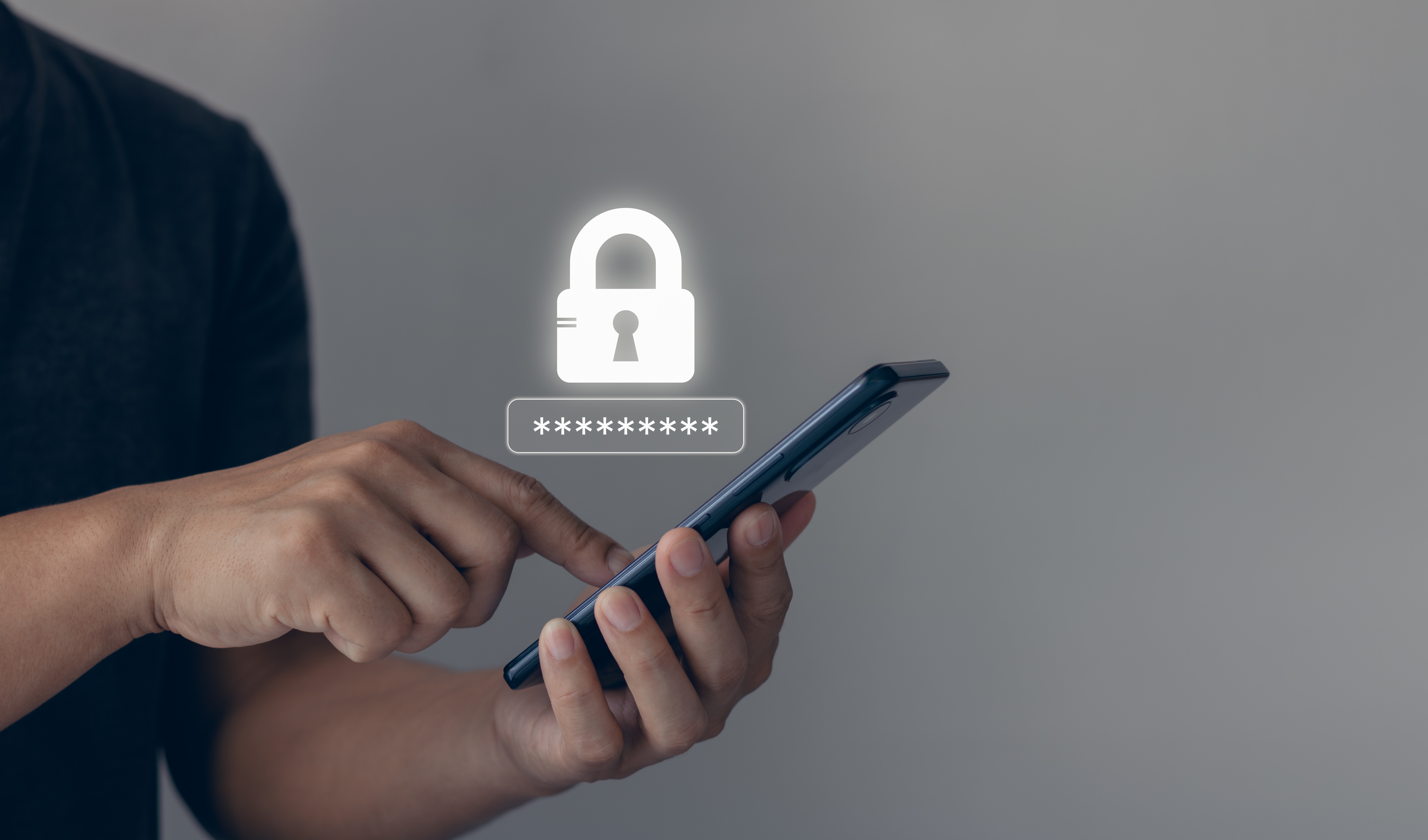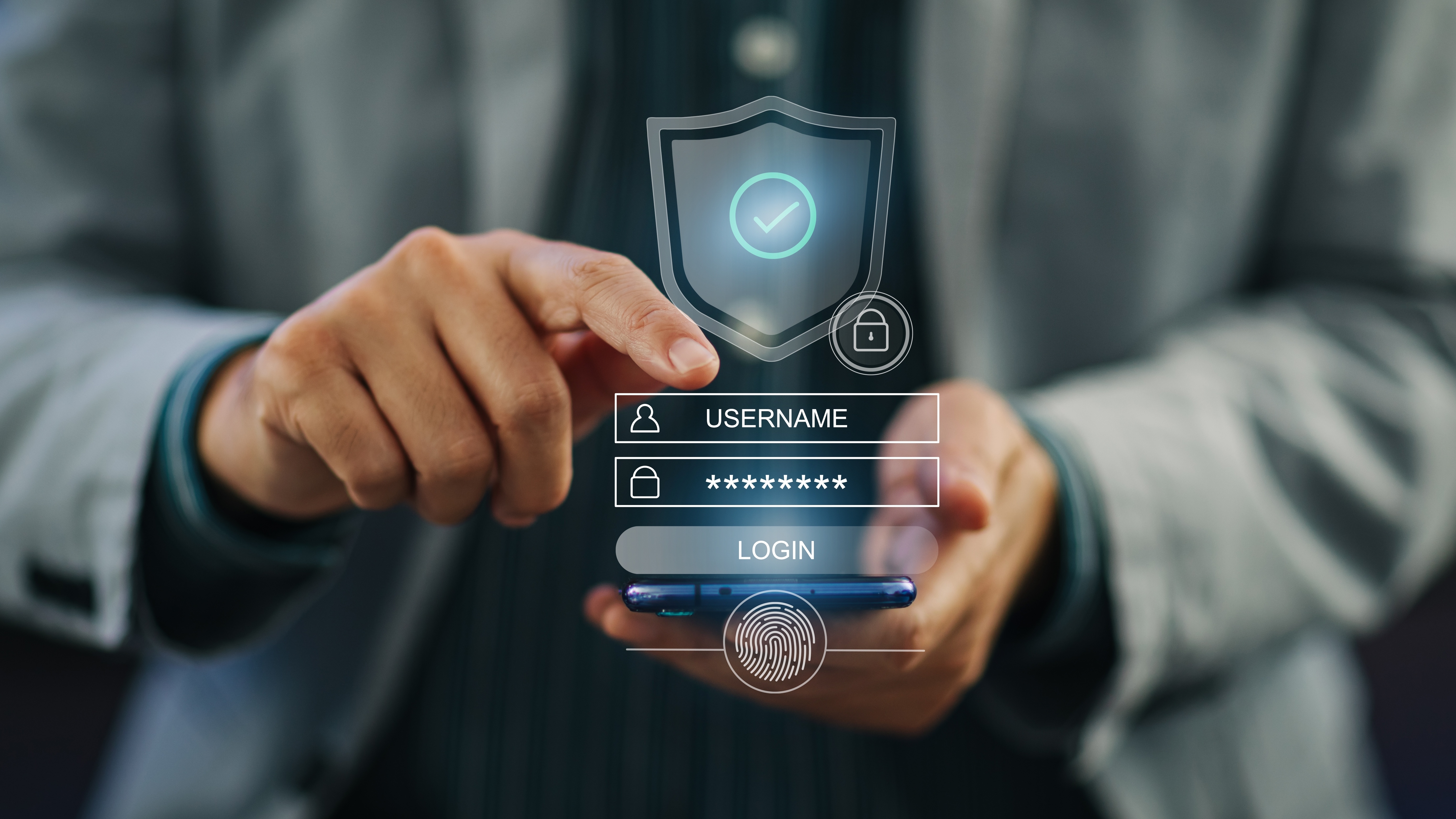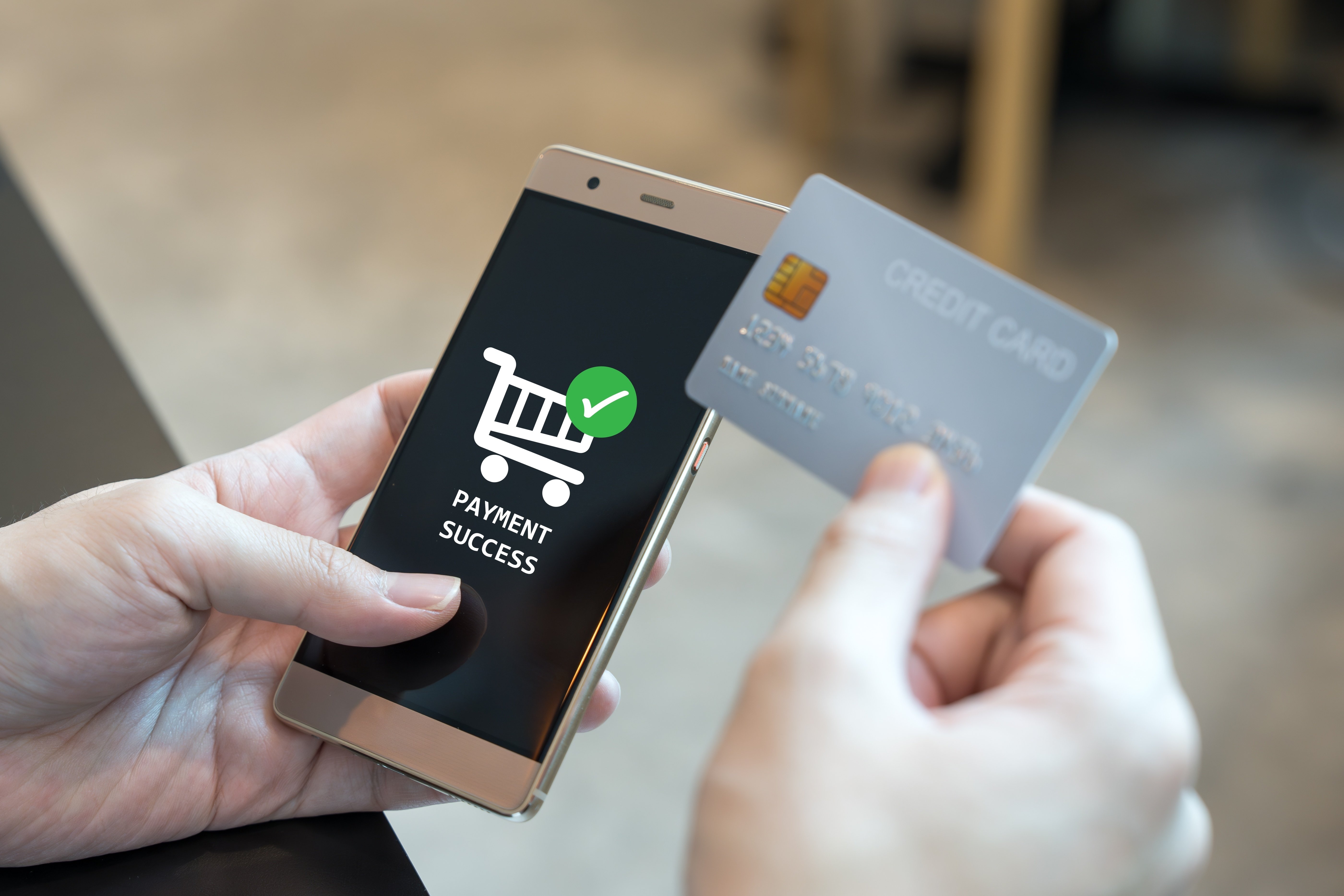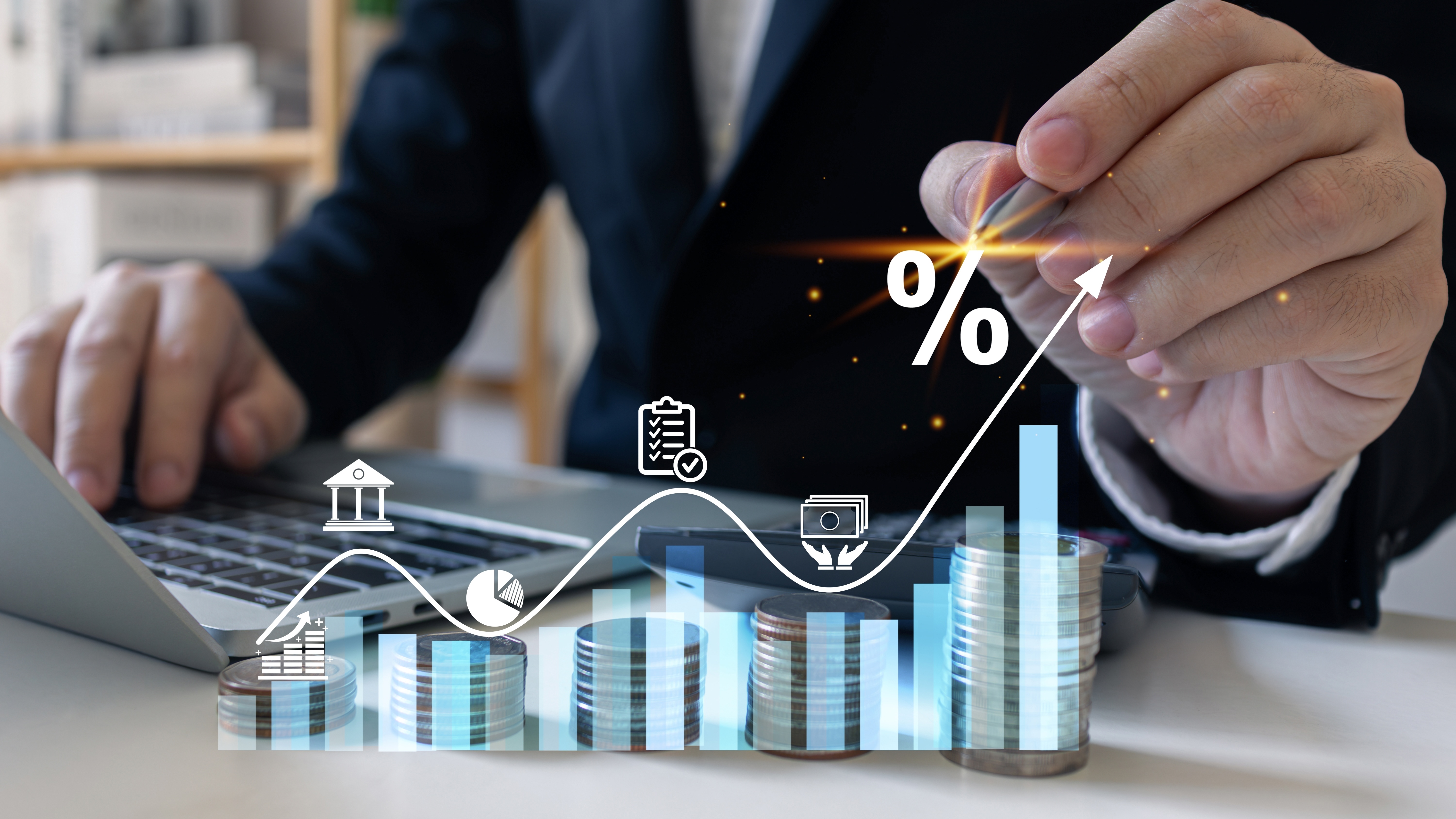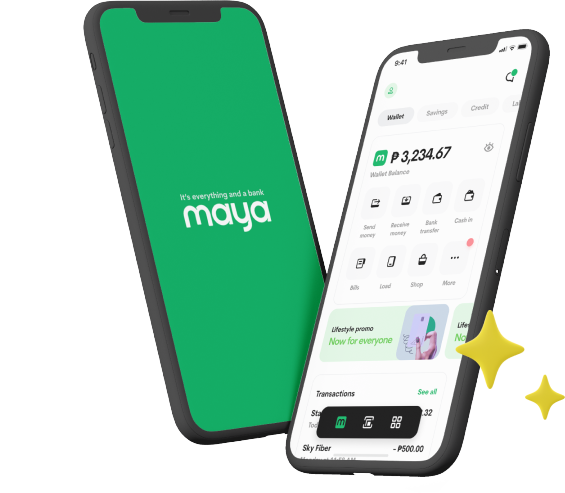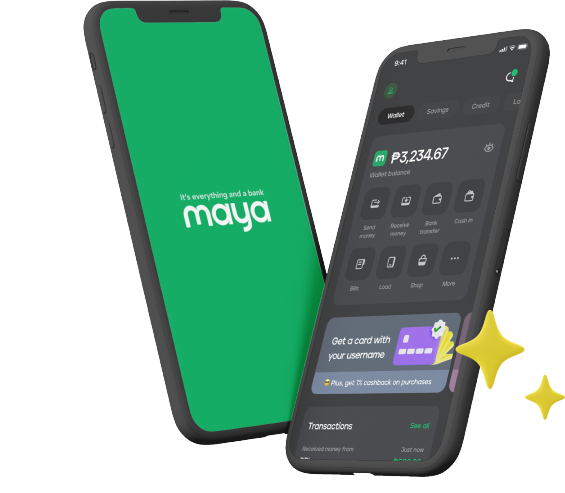Security remains to be among the top concerns people have as to why they’re hesitant about fully embracing digital banking. This worry is not entirely unfounded. After all, according to the 2024 State of Omnichannel Fraud report by risk information provider TransUnion, around 8.3% of all digital transactions done in the Philippines that year were suspected to be fraudulent. This means that scammers have gotten hold of those accounts and made the purchases instead.
Therefore, digital banks are constantly challenged to prove to users that their platform has all the security features needed to keep scammers and other cyber threats at bay. Here at Maya, our goal is to give you that peace of mind. If you’re asking, “Is Maya safe?” then the answer to your question is a resounding yes. Every Maya security measure is aimed toward making sure that your Maya digital banking account remains secure against online threats.
For instance, a Maya account can only be logged into using one device at a time. As such, anyone trying to log in with your credentials on another device won’t be able to do so as the Maya app will ask them for a one-time password (OTP) first. OTPs are used to verify big purchases as well, ensuring that it really is you who is making the transaction. You can also set a recovery email in your Maya app settings, allowing you to easily take back your account in case you need to.
That being said, cybersecurity is a two-way street. No matter how safe a digital bank is, an account can still be put at risk if its owner isn’t knowledgeable about security threats and online scams that can target them. As such, to keep your Maya digital bank account secure and avoid being a victim of online scams, here are some helpful tips to keep in mind.
1. Keep Your Login Details Private
Users are often said to be the weakest link when it comes to cybersecurity because they are prone to exposing their own financial or personal information, which eventually leads to their accounts being compromised. Hence, the first step to keeping your Maya account safe is to keep your login details and other sensitive information private. Never share your login password and one-time passwords (OTPs) with anyone, and make sure you don’t leave your device unattended while your account is logged in.
2. Learn to Spot Phishing Scams
The modus operandi of phishing scammers is as follows: they pretend to be from a legitimate financial institution or business then ask for your login details or other personal information under the guise of verification. They also typically scare victims by saying that if they don’t comply right away, then their accounts may be deactivated or permanently deleted.
Hence, if you happen to receive a message claiming to be from Maya and asking for your login details, don’t engage it and definitely don’t click any links that come with it. Block the number and report the incident to support@maya.ph to help us warn other users as well. Learning to spot the common tells of a phishing scam helps protect your account from being taken over by scammers.
3. Utilize Limit and Control Features
Opening a Maya Savings account and accomplishing several conditions such as depositing PHP 250 to the account qualifies you for a free Maya Card, which you can use to withdraw your savings from any BancNet ATM or to pay for both physical and online transactions. To keep your Maya Card—and, by extension, your Maya Wallet—secure, make sure you utilize the limit and control features that come with it. Through the Maya app, you can set restrictions such as not allowing the card to be used for online or foreign purchases to keep it secure from fraudulent transactions.
4. Shop Only from Credible Stores
When shopping online and paying with your Maya Card or Maya Wallet, make sure you’re transacting with credible stores. This is to prevent your account details from being exposed to cybercriminals that may want to steal your information. When doing e-commerce transactions, make sure you’re on the official website of the business or marketplace you intend to purchase from. Also if their web address begins with “https://” as this protocol typically indicates that the website is secure. You can also read reviews from past customers first to see if other people can attest to the trustworthiness of the store.
Additionally, always check your transaction history on your Maya app after every purchase to ensure that you were only charged the appropriate amount. If you notice any suspicious transactions in your history, then don’t hesitate to use the 24/7 support chat found in your Maya app so we can help you out right away.
5. Access Your Account over Secure Connections Only
When logging into your Maya account, make sure you’re doing so over a secure connection, such as your home’s password-protected Wi-Fi or a virtual private network. This prevents online criminals from potentially stealing your data over the network. Avoid transacting with your digital banking and e-commerce accounts while connected to a free public Wi-Fi as this type of connection doesn’t offer the same security and can easily put your personal information at risk.
While the Maya app is equipped with top security features that keep each account safe and secure from our end, we also need your cooperation in making sure that your account won’t be vulnerable to online scammers. By simply following the tips in this article, you can significantly reduce your risk of being a victim to online scams and thus enjoy shopping or transacting online without any worries.
You might also like
These Stories on Maya Bank
